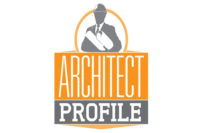Founded in 1965, LPA Inc., is known as one of the largest integrated design firms in California. With extensive experience in public and private architecture, LPA designs a diversity of facilities that span from K-12 schools, colleges and universities, to civic, corporate, religious and retail establishments.
designs a diversity of facilities that span from K-12 schools, colleges and universities, to civic, corporate, religious and retail establishments.
W&C Architect interviewed Glenn Carels, a principal at LPA who has been with the company his entire career, starting as an intern at the company 28 years ago. Carels, who has AIA, LEED AP BD+C designation has no plans of stopping anytime soon, and finds new inspiration every day for designing buildings meant to last for the future.
W&C Architect: How many years do you have in the profession?
Carels: I've been with LPA for 28 years. [The firm] recruited me straight out of university as an intern, and I’ve been with the same company ever since.
W&C Architect: What is your work history in this field?
Carels: I’m now a design principle that oversees the design market segment. Higher education at universities—such as USC, CSU, as well as private colleges—has always been a big interest to me because of the impact architecture can have on people’s ability to learn.
Being educated as an architect in Southern California, one of the things that become part of my design DNA is the environment—not only the climate but there is also a great history precedent in terms of other great designers like Rudolf Schindler and Frank Lloyd Wright. They all have nature as their biggest inspiration. That’s what drew me toward this profession and has allowed my work with this firm to be recognized as very sustainably based.
W&C Architect: Where did you go to school?
Carels: California State Polytehnic University
W&C Architect: Did you have a specialization?
Carels: Before there was a focus and definition on what sustainability is, we used to refer to that as good design. A sustainable project makes the most of what I refer to as the natural site. Ambient temperature, natural breeze- if you take all these types of things and look at what the site has to offer you, it already starts to inspire a great design solution.
I’ve always had sustainability in mind as a specialization. Commercial developers are so budget driven they teach you something that is inherently part of sustainable design; design more with less, that’s why development work is super efficient. I’ve also done some religious architecture, churches and sanctuary type designs are what taught me to prepare for higher education work. As in how important the social aspect is to higher education and architecture when they unite and represent something bigger.
W&C Architect: Do you approach architecture from an artistic or functional starting point? Are the two concepts exclusive?
Carels: They are one of the same because what I’ve experienced is a lot of times the essence of what the design solution can be is discovered in the functional aspect, so how the structure and mechanical systems ultimately effect the space.
I like to problem solve, I’m always trying to find ways to incorporate sustainable aspects. LPA’s take on design in my opinion, is always trying to find the pragmatic and poetic aspects of any design opportunity. If you consider those two together and find the balance, that’s the open solution—you can’t have one without the other.
W&C Architect: If any, who are your role models?
Carels: That ranges from people like Charles Dean, Richard Neutra and Rudolf Schindler. All those people are a list of incredibly talented people that were inspired by the local climates and you can see everywhere you go in Southern California how their architecture really shaped the way we live today. I learn something new every day and my current role models are the people I work with.
W&C Architect: What projects, other than your own work, do you find inspiring?
Carels: I would say just the building environment itself is inspiring and anytime I find myself in nature. The place I’ve recently gone to for inspiration and renewal in my design approaches has been Europe, specifically the Netherlands. It’s interesting going to these other places that have different sets of criteria and building codes. The fact they do so much experimentation—you can find something brand new that’s next to a building hundreds of years old.
W&C Architect: How many buildings have you designed?
Carels: As an architect, I’m not concerned about quantity, I’m concerned about quality, and in the end I’m not sure how many projects, but my hope is that each building I’m doing, they’re each improving from a qualitative standpoint.
W&C Architect: What are your guiding principles when designing a structure?
Carels: The higher education project type is my favorite and that’s why I chose to lead that effort for this firm. It is so people centric: administrators, presidents, the faculty members, the people who are doing the work every day, the students, and I believe architecture as a physical environment can affect your ability to learn and become a memorable part of your experience. Especially during the time when you’re going to college, it’s a transformative time in your life, you start to remember spaces and things differently than in elementary school. The clients are all unique and different and that is also exciting, you have to tailor all your solutions to new climates, and I love its always something new and different every time.
W&C Architect: If you could have any building to redesign—anywhere in the world—which would you like to address?
Carels: I wouldn’t redesign someone else’s work, but if there’s one thing I could change, it would be to have the ability to use what I know now and use the new building techniques and materials that are available today, and apply that to some of the projects I worked on several years ago, as several advancements have been made.
W&C Architect: What types of products interest you?
Carels: One thing I’m looking for in materials from cladding to lighting are the sustainable aspects of the materials and what I’m looking for specifically are materials manufactured locally. If you look at ancient architecture, because they couldn’t transport material overseas the architecture was always regional and seemed to fit with the buildings you could see in your local environment. What I’m looking for are local materials inherently sustainable, and manufacturers that will design materials inherently very sustainable. The materials that don’t take a ton of energy to produce are best, I look for the products with the lowest embodied energy, if it’s green but only lasts one year it will get put in a land fill and essentially goes against the root of sustainable design.
When you’re designing a ceiling or anything you want the building to be future proof where you can move a lot of walls without a lot of demo, and without a lot of demo you don’t have a lot of waste, so when you design a ceiling you want it to be modular, and perform acoustically. A metal ceiling, perforated ceiling, or wood-type ceilings tend to be more durable, ultimately a little bit of higher front end costs, but they will weather well.





















